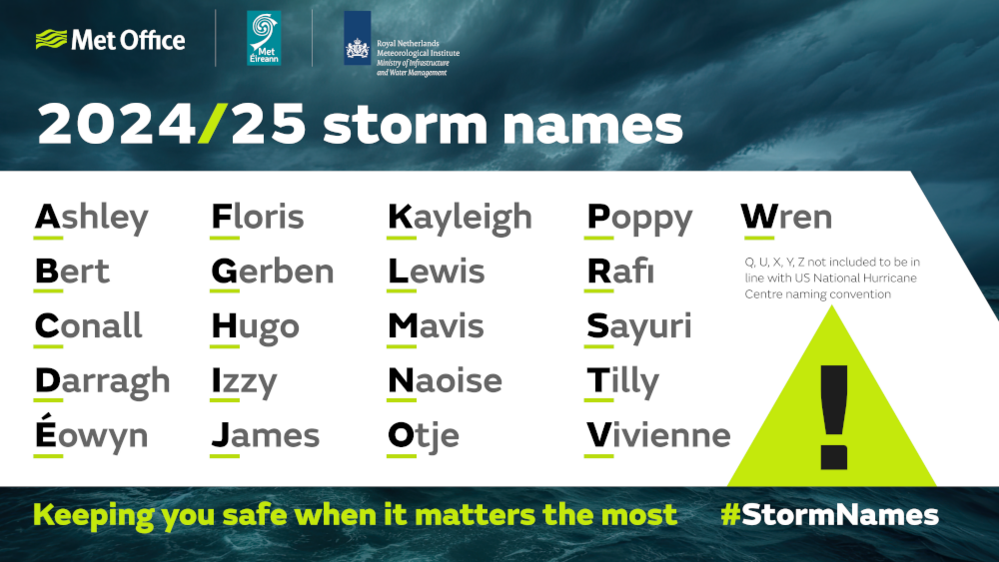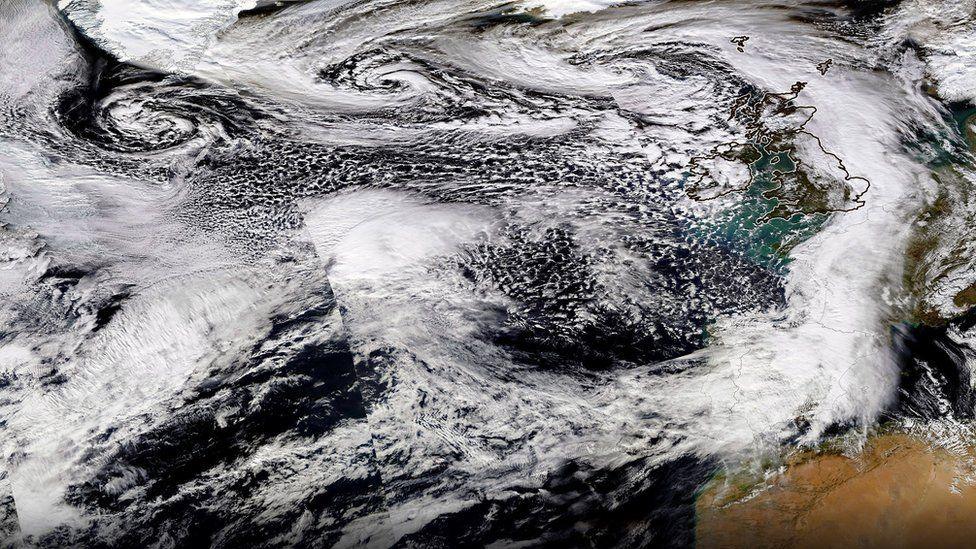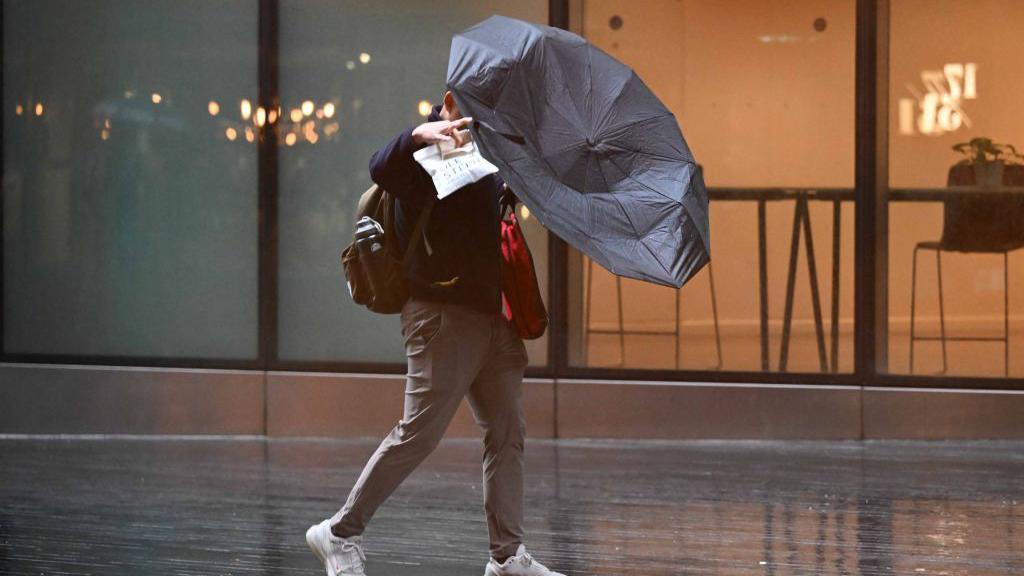Why do storms have names?
UK Weather: How do storms get their names? BBC Weather presenter Ben Rich explains (2022)
- Published
In the UK, the Met Office - which keeps track of the weather - names powerful storms.
It does it to make people more aware when severe weather is on the way.
In the past we've had lots of storms with different names including Storm Dennis, Storm Eunice and Storm Babet.
James, Lewis and Mavis are all storm names for the 2024/25 season.
Each one of these is linked to a key figure from the Met office's 170 year history.
What is a weather warning?
- Published15 November 2023
What are hurricanes, cyclones and typhoons?
- Published31 August 2023
The Big Question: How do we predict the weather? Video, 00:01:50
- Published14 December 2017
Why do storms have names?

Here are the names for the autumn and winter storms of 2024-2025.
The Met Office started giving storms names back in 2015, in the same way they do in America.
The first windstorm to be named was Abigail on 10 November 2015.
The Met Office hopes that naming big storms will make people more aware of them and how dangerous they can be.
It thinks it will be easier to follow the progress of a storm on the TV, radio, or on social media, if it has a name.
How are the names picked?

Since September 2015, the Met Office has asked people for suggestions for storm names.
The most popular names put forward by the public are made into a list, along with other names suggested by Met Eireann (Ireland's equivalent of the Met Office).
Sometimes the UK will be hit by storms from Europe or other countries, and the storm will keep the name the first country it affected gave it - even if it doesn't follow the UK's alphabetical order.
So if you do have an amazing suggestion you can send it to the Met Office for consideration.
Not every storm to hit the UK gets its name from the list.
Lots of storms start off in the US before crossing Atlantic towards the UK.
To avoid any confusion, they keep the name they were given by the National Weather Service in the US.
How big does a storm need to be to get a name?

Not all storms will be big enough to get names - only those expected to cause significant damage.
A storm will be named when it has the potential to cause an amber 'be prepared' or red 'take action' warning.
Who decides if they're named after boys or girls?

The UK storms will take it in turns to be female or male names.
Strangely, research shows that hurricanes with female names are more likely to hurt more people than those with males names.
Scientists think that's because people find female names less threatening.
Which storm name will be picked first?

They will be taken from the list in alphabetical order, but there are no storms that start with the letters Q, U, X, Y and Z.
That's because the US National Hurricane Centre leaves out names that begin with these letters.
The Met Office has done the same thing to make sure official storm naming in the North Atlantic is consistent.
